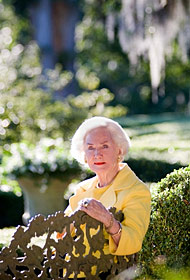
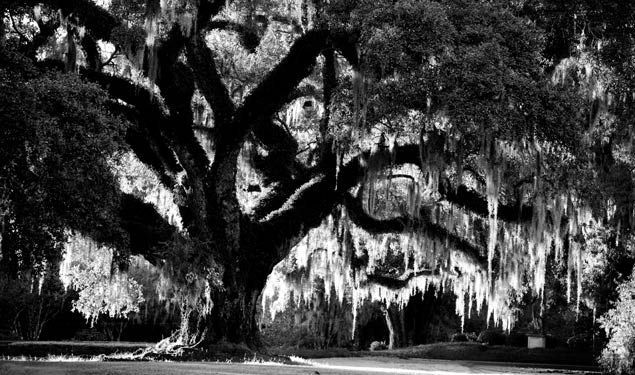
Photograph © Jeannie Frey Rhodes
The gardens have always risen phoenix-like from disaster because of the awareness and devotion of various owners who have come to rescue it at just the right moment to save it from oblivion. May its future be as fortunate. — Genevieve Trimble
History of Afton Villa Gardens
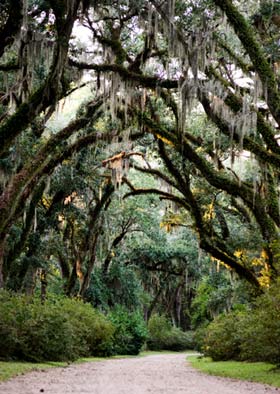
Photograph © Jeannie Frey Rhodes
Bartholomew Barrow purchased approximately 867 acres in what is now West Feliciana Parish, Louisiana, from his brother, William Bartholomew III, in 1820. Barrow lived on the plantation, called Home Place, for nearly 20 years before selling the property to his son, David. The younger Barrow continued to successfully work the property, along with lands in nearby Pointe Coupee Parish, as a cotton plantation and would assure the family’s place as one of antebellum Louisiana’s most affluent families.
Barrow married widowed Kentuckian Susan Woolfolk following the death of his first wife in 1846. Having lived in Virginia with her first husband and travelled to New York and Europe, the young bride was accustomed to the most stylish surroundings. She quickly set out to formalize the house and gardens, which her husband encouraged as long as the original residence remained intact. Mrs. Barrow spent nearly a decade expanding the original dwelling, creating a 40-room Gothic Revival mansion in its place, and directing the installation of 25 acres of elaborate gardens on the 250-acre estate—Afton Villa.
Completed in 1857, the estate included a half-mile long entry drive flanked by an allée of more than 250 live oaks and masses of colorful azaleas. The landscape design takes advantage of the natural contours of the property. Like many formal Southern gardens, Afton Villa’s terraced gardens descend in stages away from the house, down the sloping hillside. The seven terraces house the parterre garden and boxwood maze and display a variety of plants typical of 19th century Southern gardens, including camellias, magnolias, and sweet olive. The family cemetery, the only feature of the present garden that dates to the original 18th century plantation, is bounded by a mature formal hedge.
The Barrows lived at Afton Villa through the Civil War, raising several children on the estate. Mrs. Barrow left the estate after her husband’s death in 1874. The estate operated as a boarding school for a brief period and, in 1915, Dr. and Mrs. Robert E. Lewis purchased the property. The couple worked to restore the original gardens, planting hundreds of azaleas on the property and developing the variety The Pride of Afton. The Lewis’ lived on the property until 1945 when they sold it to Mr. and Mrs. Wallace Percy. A fire destroyed the main house in 1963 and the gardens once again fell into disrepair.
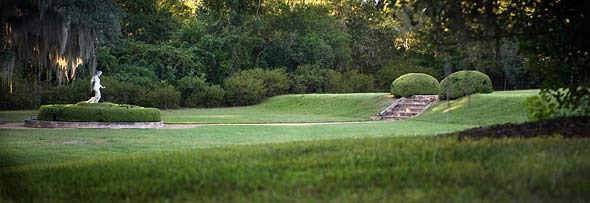
Photograph © Jeannie Frey Rhodes
Genevieve and Morrell Trimble developed an immediate affection for the estate after driving by one day. They were devastated when the mansion burned down and watched as the gardens fell into disrepair. In 1972, concerned that the property would be purchased and re-developed, they decided to purchase the estate and restore its European style gardens. The Trimbles took up residence in the pool house, which they had renovated for that purpose, and began work to restore the overgrown gardens along with the help of landscape architect Neil Odenwald, professor emeritus at Louisiana State University, and a crew of groundskeepers.
Steward Genevieve Trimble has since worked tirelessly to protect the gardens, endeavoring to keep the original footprint and character of the space. The formal gardens that surround the main house have since been rehabilitated with little change since their inception under David and Susan Barrow. However, along with continuing restoration efforts, the Trimbles incorporated the ruins of the villa into a series of gardens that retain the house’s original footprint. Stairs lead to a small garden at the bottom of the slope called the Music Room, which sits above the Daffodil Valley. In the 1970s, the Trimbles constructed a pond and lake on the grounds of the property. The Trimble’s were presented with the 2003 Preservation Award by the Foundation for Historical Louisiana. Genevieve continues to care for the gardens and educate visitors about their history.
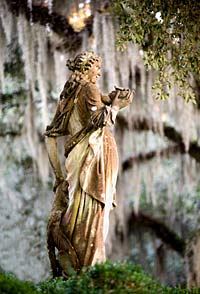
Photograph © Jeannie Frey Rhodes
Threat
In its 163-year-history, the gardens at Afton Villa have been at the point of destruction many times—during the fierce battles of the Civil War, the economic downturn of the Great Depression, the fire that destroyed the Gothic Revival plantation house, and several massively destructive hurricanes. However, thanks to a series of thoughtful and devoted owners, the gardens have been resurrected and continue to speak to Louisiana’s significant landscape legacy. It is the current owner’s hope that the gardens’ future is always as fortunate. However, the extensive grounds and detailed gardens require constant vigilance by a large, well-trained staff and the use of significant resources.
